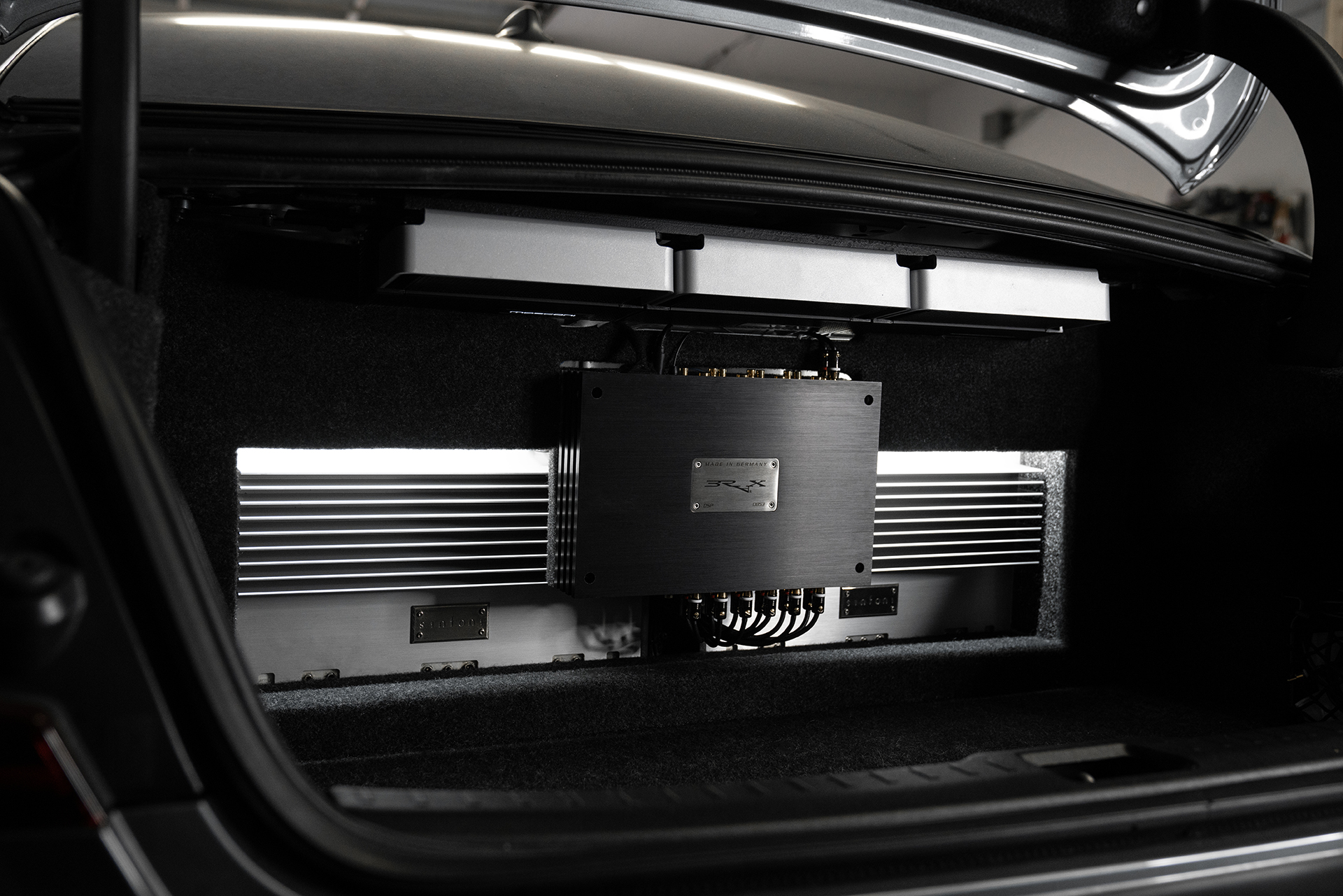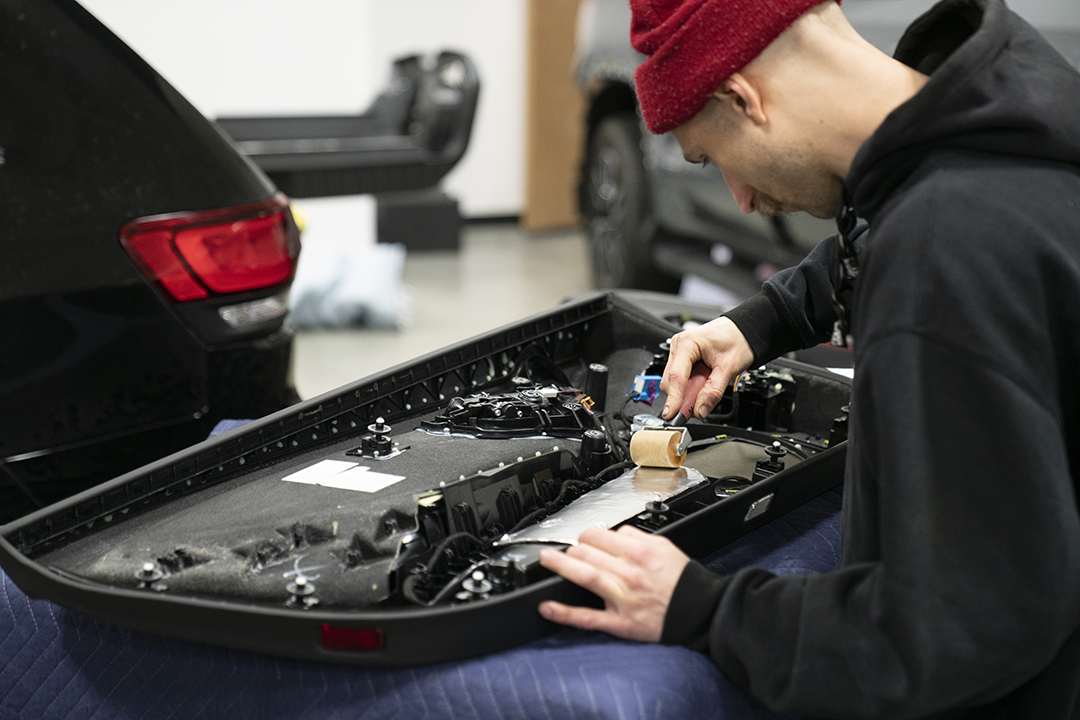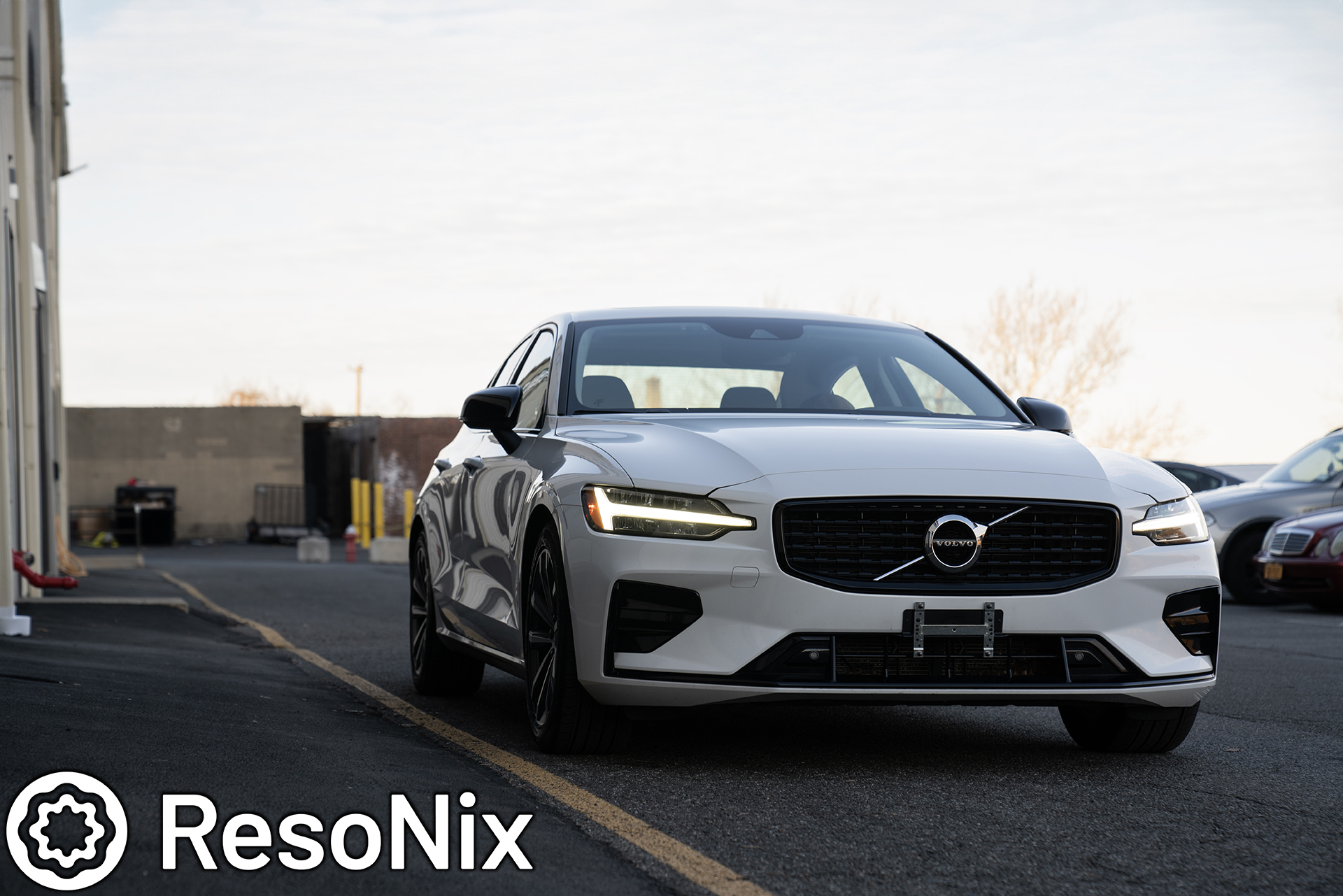
2019 Volvo S60 R-Design – ResoNix Sound Solutions Demo Vehicle Car Audio Installation
2019 Volvo S60 R-Design – ResoNix Sound Solutions Demo Sound System Elevating Sound and Functionality: The Ultimate 2019 Volvo S60

Sound deadening in cars is a process that involves the use of materials to absorb or dampen sound waves and vibration. This process can be applied to various parts of a car, including the doors, roof, trunk, and floor. The goal is to reduce noise and vibration that can be distracting, uncomfortable, or even harmful to your hearing. It is also used by many to improve the sound system in their vehicle.
There are a handful of main types of sound deadening materials for cars. Constrained Layer Dampers (commonly referred to as Sound Deadener) are by far the most common and widely known. There are also Sound Absorbers, Decouplers, and Barriers. Constrained Layer Dampers and are applied to the body and interior panels to reduce structure-borne resonance. This is arguably the first and most important step. Absorptive materials, such as Hydrophobic Fiber Mat, absorb sound waves and convert them into heat energy. Decouplers help isolate two panels to prevent them from rattling against each other. Barrier materials, such as ResoNix Barrier, block sound waves from passing through into the car’s cabin.
Sound deadening in cars works by reducing the transmission of sound waves and vibration through various materials. When sound waves or vibration hit a surface, they can be reflected, absorbed, or transmitted. The amount of sound or vibration that is reflected or transmitted depends on the density and thickness of the material.
Sound deadening material, constrained layer dampers specifically, are a vibration damping system. This system consists of a viscoelastic core sandwiched between a stiff outer aluminum constraining layer, and the panel it is adhered to. When the structure to which the damper is attached vibrates, the viscoelastic core of the damper dissipates the energy of the vibration by using its natural shear forces and converting the mechanical energy into heat. This reduces the amplitude of the vibration and, therefore, the noise and wear and tear on the structure.
Sound deadening in cars is essential for several reasons. First, it can make your ride more comfortable and less fatiguing by reducing road noise and vibration. This can make long drives much more pleasant and less stressful.
Second, sound deadening in cars can improve the sound quality of your audio system. By reducing background noise and vibrations, as well as resonance that causes distortion, you can hear your music or podcasts more clearly and at lower volumes, and have it retain clarity at higher volumes.
Finally, sound deadening in cars can help improve the resale value of your vehicle. A car that is quiet and comfortable to drive is generally more desirable than one that is noisy and uncomfortable.
Sound deadening in cars is a critical process that can make your driving experience much more comfortable and enjoyable, and drastically improve your sound system. Whether you’re looking to reduce road noise, improve audio quality, or increase the resale value of your vehicle, sound deadening materials can help. By understanding how sound treatment works in cars and why it’s essential, you can make an informed decision about whether it’s right for your vehicle.
If you have any specific requests on tech tips regarding anything else related to car audio or sound treatment, please email us with a request. Thank you!

2019 Volvo S60 R-Design – ResoNix Sound Solutions Demo Sound System Elevating Sound and Functionality: The Ultimate 2019 Volvo S60

Elevating the Volvo S60 Experience: A nearly completely hidden sound system upgrade with one extra goal; to keep it OEM

ResoNix Sound Solutions is a company with a specialty in high-end car audio and automotive sound treatment that offers top quality products and services that provide superior performance in their respective categories. No gimmicks, no baseless claims, no nonsense. Constrained layer dampers, sound absorbers, decouplers, noise barriers, and car audio DSP tuning and consultation services are part of our line-up with a focus on data-backed, solutions-based products developed by professional enthusiasts, for enthusiasts.
